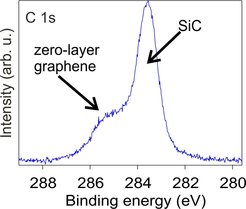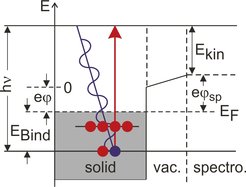
PES (Photoelectron Spectroscopy)
High-resolution ESCA: Electron Spectroscopy for Chemical Analysis, XPS (x-ray photoelectron spectroscopy), UPS (ultra-violet photoelectron spectroscopy), ARPES (angle-resolved photoelectron spectroscopy).
High-resolution PES is useful for almost all experimental groups at the MPI of Solid State Research

- Determines quantitatively the chemical composition, the atomic structure, and the electronic structure of surfaces and interfaces.
- Energy Resolution: XPS: 0.48 eV, UPS: < 20 meV.
Angular Resolution: 0.1°. - Identifies chemical species at interfaces in different chemical environments.
- Measurements of the valence bands and of the work function.
- The PES apparatus is equipped with a preparation chamber housing low-energy electron diffraction (LEED), quadrupole mass spectrometer (QMS), Knudsen cell evaporators, facilities to clean a surface, making this system extraordinarily flexible and versatile.
- Sample cooling to 150 K and heating to 2000 K.
- Photon sources: Al Kα and Mg Kα, monochromatic Al Kα and Ag Lα, monochromatic He I and He II.
- Charge Neutralization: needed for the investigation of insulators.
- Transfer via UHV for Omicron sample holders and mK-sample holders is established. The transfer of samples from glove boxes under Ar or N2 atmosphere is also possible. Other possibilities to transfer samples without air exposure can be discussed.

XPS/ESCA utilizes a monochromatic x-ray beam with energy hν, which excites core-level photoelectrons. These are energy separated and their kinetic energy (Ekin) is determined. The binding energy (Ebind) which is element and chemical state specific can be calculated:
EBind=hν-Ekin-Φ, where Φ is the work function of the analyzer.
ARPES/UPS utilizes ultra-violet light for the excitation of valence electrons. By additionally determining the angle under which the photoelectrons are emitted the band structure of the crystalline samples can be measured. Additionally also the work function of the samples can be determined.

